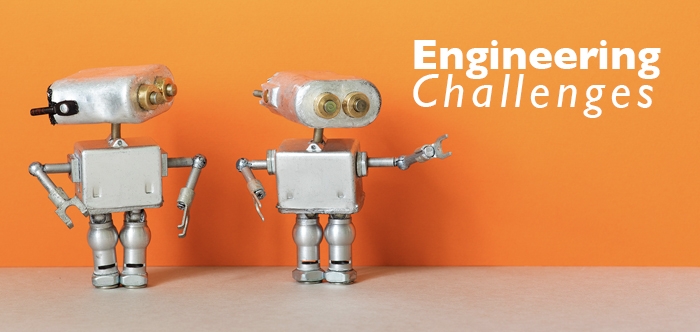
Grade Six Preferred Integrated Course Model – Chapter 5
Engineering Connection: Organ Donor (Chapter 5, p. 364)
Teaching about organ and tissue donation provides opportunities to connect learning about body systems (CCC-4) with a socially beneficial topic that also has strong connections with engineering and technology.
Donate Life California has an informative Web site that includes educator resources, notably an Interactive Body Tour (see Donate Life California at https://www.cde.ca.gov/ci/sc/cf/ch5 asp#link2). Students can work in groups to research and learn about organ and tissue donation related to different body systems and diseases. They can create system diagrams related to the different diseases and transplantation remedies as well as representing the system for soliciting donors, identifying recipients, and getting the organs/tissues to the patients in excellent condition and within the necessary criteria and time constraints.
Students can also evaluate (SEP-8) how well the Web page motivates people to become donors. Without a large pool of potential donors, doctors won’t be able to provide transplants to people that need them. Sharing these issues to policy makers and the public are important aspects of communicating science (SEP-8). Students can also analyze donor recruitment as a system for which they can identify constraints (SEP-1) and propose solutions (SEP-6) to increase the number of people who volunteer to become donors. This kind of system modeling (CCC-4) extends the crosscutting concept beyond physical science and engineering into applications of science to social issues.
Engineering Connection:
Finding the Optimal Site for a Wind Farm (Chapter 5, p. 394)
As air masses move, they go up, over, or around mountains. The landscape shape therefore has a big impact on wind speeds. Students analyze data (SEP-4) showing the average wind speed at different locations around their city. They look for patterns (CCC-1) that provide evidence that the landscape shape influences wind speed. Using information about topography and typical wind speeds and directions, they determine the optimal placement of a wind farm that could provide clean energy for their city. They might also need to consider human constraint, such as, how the land is currently used and who owns it. (EP&C V).
Grade Seven Preferred Integrated Course Model
Engineering Connection: Landslide Early-Warning System (p. 470)
With this model of landslide causes, students consider a small region, predict where the landslide hazards are greatest, and design a warning system to minimize their damage. (MS-ESS3-2) Using computer-based map layers, such as in Google Earth, showing slope steepness, rock strength, annual rainfall, and/or expected ground shaking in an earthquake, students can identify areas that are most likely to slide. They can compare their predictions to published maps of landslide hazard for California or the locations of actual catastrophic landslides in 1982 or 1994. (USGS 1988, 1995) Students could use this information to design (SEP-6)[a landslide warning system that works in conjunction with the National Weather Service weather forecasts (such a system actually exists, https://www.cde.ca.gov/ci/sc/cf/ch5 asp#link15). Students need to define the problem (SEP-1) by figuring out what information could minimize loss of life in landslides and how to get the information to the community. (MS-ETS1-1)
Grade Eight Preferred Integrated Course Model
Engineering Connection: Collisions (Chapter 5, P. 487)
MS-PS2-1 provides a capstone goal for IS1. Students design a solution (SEP-6) to a problem involving the motion of two colliding objects. The clarification statement for the performance expectation offers examples of collisions between two cars, between a car and a stationary object, or between a meteor and a space vehicle. In order for this challenge to extend deeper into the design process, the suggestion here is to restrict the projects to situations for which students can physically model and obtain data that can be used in iterative testing and refinement of their design solution.
The classic egg drop could be used but many of the solutions to that problem involve slowing the falling egg before the collision. The emphasis for the performance expectation is on applying Newton’s Third Law that objects experience equal and opposite forces during a collision. For example, a variation where students attach eggs to model cars and design bumpers will follow naturally from their prior tabletop experiments. At the conclusion of their testing and refinement, students should be able to use their models of energy transfer (CCC-5) and kinetic energy to make an argument (SEP-7) about how their design solution works. Bumpers tend to reduce the effects of collisions by two processes: (1) they absorb some of the source kinetic energy so that less of it gets transferred to kinetic energy in the target object and more of it gets converted to thermal energy; and (2) they make the collision last longer so that the transfer of energy occurs over a longer time interval.
No matter what type of collisions students investigate (SEP-3), they will need to identify the constraints that affect their design, as well as, the criteria for identifying success. (MS-ETS1-1). As student teams evaluate competing design solutions (MS ETS1 2) and identify common features of successful models (MS ETS1 3), they can identify and model the physical processes that are involved, using the dual perspectives of forces and energy transfers. Students should be able to discuss their bumper solution in terms of energy source/receiver diagrams such as figure 5.41. Towards the end of their design challenge, students need to explain (SEP-6) why certain choices they made actually work, and then use their more detailed models (SEP-2) of their system to further refine their design.
